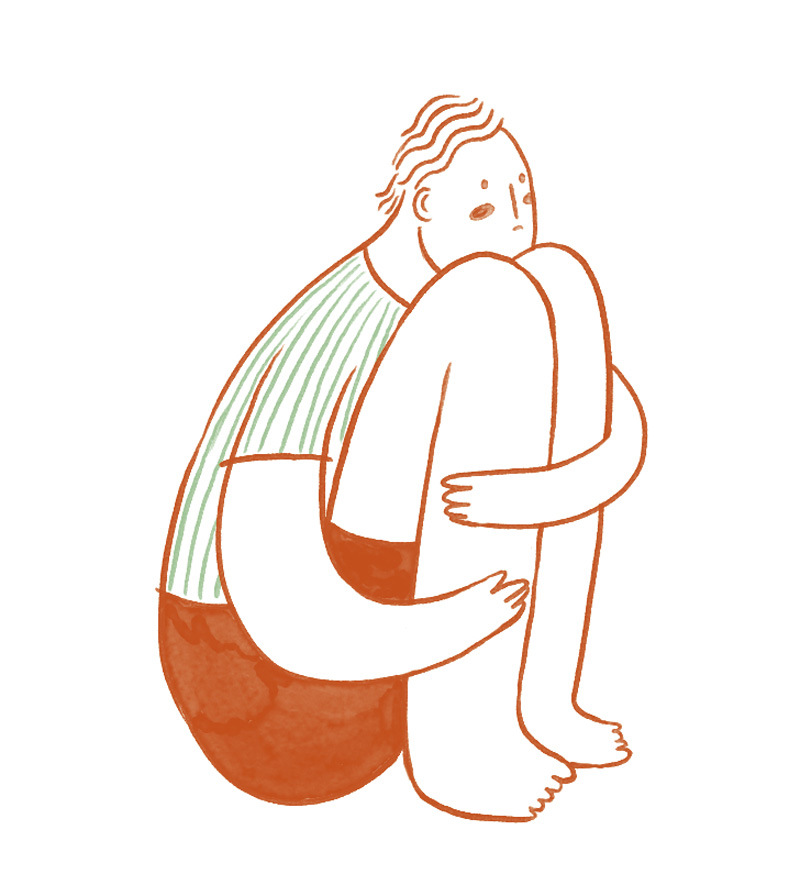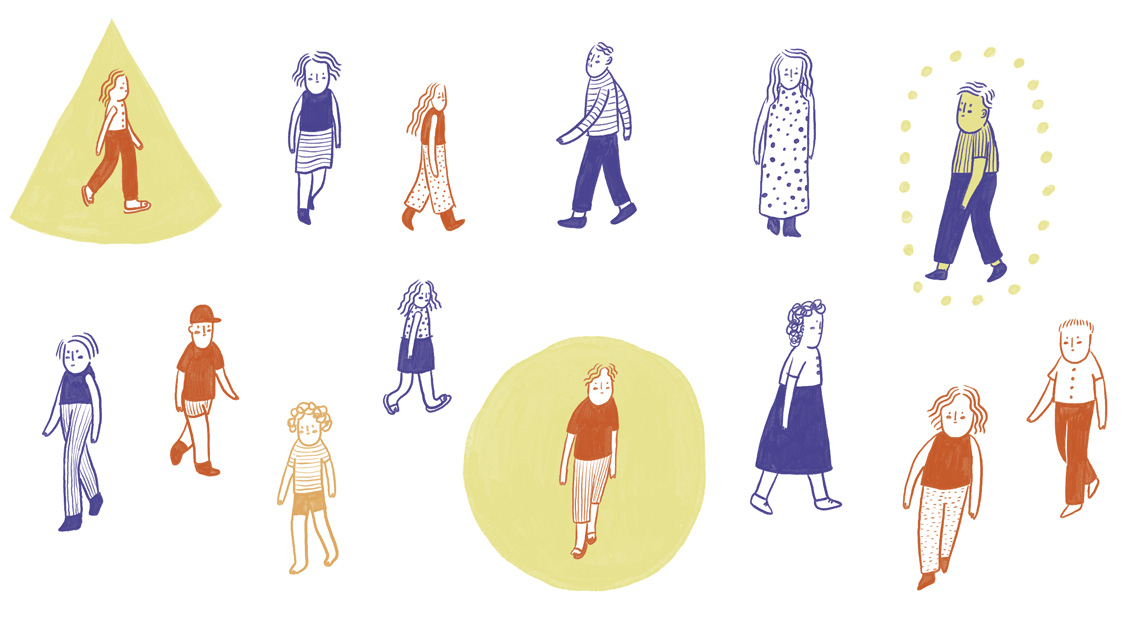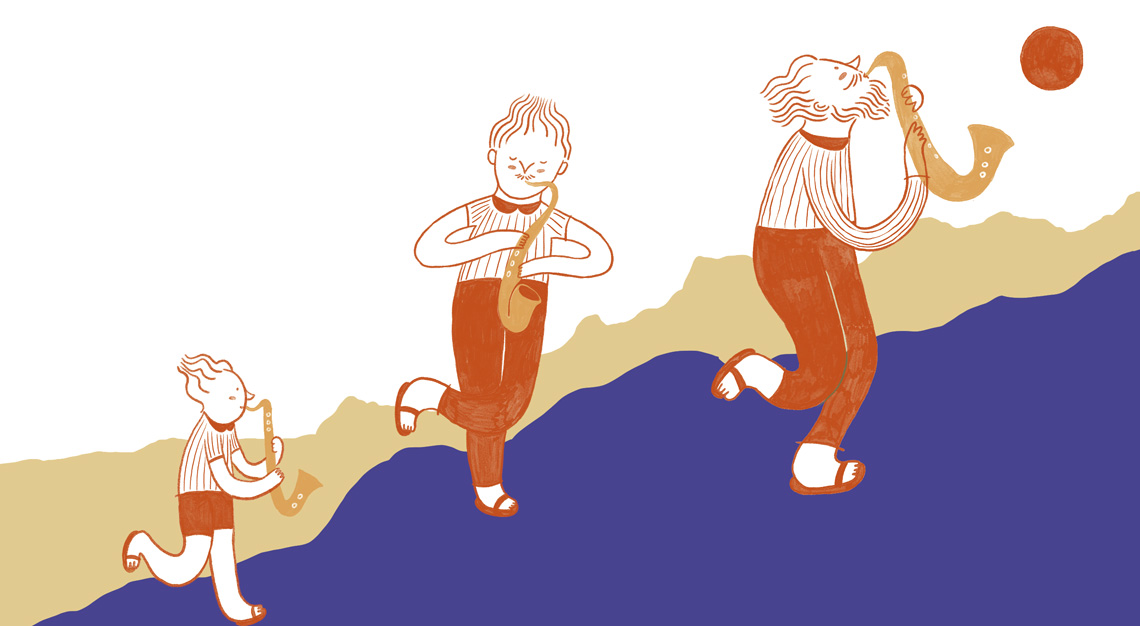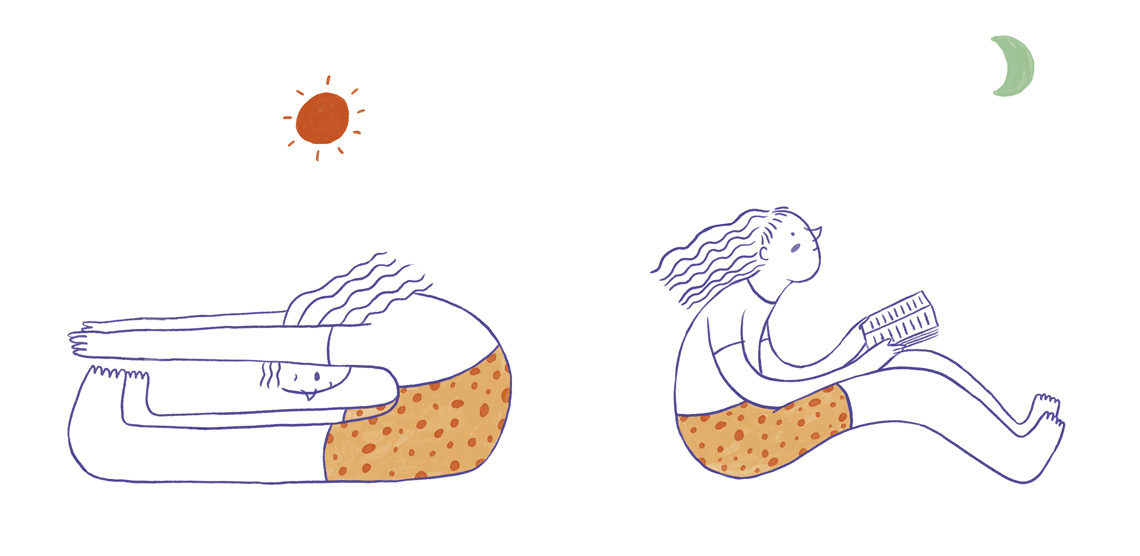Characterized by their exceptional ability to reason and learn, gifted or high-ability individuals make up an estimated 2% of the global population as projected by Mensa, an association of people with high intelligence quotients (IQs) across 100 countries, dedicated to identifying and fostering human intelligence for the benefit of humanity. The Brazilian branch of the organization estimates that approximately 4 million people exhibit these exceptional traits in the country. However, as there are no public policies in place to systematically identify gifted individuals across age groups and fields of knowledge, Brazil’s count remains confined to the school environment. According to the 2022 School Census by the National Institute for Educational Studies and Research (INEP), the number of high-ability students enrolled in public and private schools stands at 26,800. Yet researchers consulted for this article believe this figure could be significantly higher.
People are considered to have above-average intellectual ability if they score higher than 115 on IQ tests. However, although there are different models for measuring intellectual abilities, there is no consensus on what defines giftedness, a concept that extends beyond intellectual ability and varies from one country to another and among researchers and professionals working in the field. A 2019 report from the Organization for Economic Cooperation and Development (OECD) on policy approaches around the world for the inclusion of gifted students explored the different methods currently used to identify giftedness. These include a combination of IQ tests and cognitive evaluations designed to measure specific abilities and an individual’s level of engagement in activities related to their fields of interest.
As defined in the “Inclusion Practices” manual released in 2006 by the Special Education Department of the Brazilian Ministry of Education (MEC), gifted students “demonstrate high potential in any of the following areas, either individually or in combination: intellectual, academic, leadership, psychomotor, and arts.” They also exhibit exceptional creativity and deep engagement in learning and task execution within areas of personal interest, according to the manual. In other words, gifted individuals are not just those who excel in mathematics and Portuguese; they can also be natural leaders, brilliant artists or musicians, or have outstanding physical abilities. “A student with high abilities in the arts may not necessarily do well in math or other subjects. They don’t have to perform well in every field,” explains Carina Alexandra Rondini, a mathematician at São Paulo State University’s (UNESP) São José do Rio Preto campus, who has conducted extensive research in the field of giftedness since 2009, with two projects funded by FAPESP.
Cristina Maria Carvalho Delou, a psychologist affiliated with Fluminense Federal University (UFF) and chairwoman of the Brazilian Council for Giftedness, explains that in Brazil, the rights of gifted individuals in a school setting are safeguarded by the 1996 National Education Guidelines Act (LDB). Gifted students are referred for special education alongside students with various types of disabilities and overall developmental disorders. In 2015, Law no. 13,234 mandated the establishment of a national registry of gifted students in basic and higher education, as a source of data to inform public policies. “But in the same way that many directives from federal laws go unfulfilled, the registry—regrettably—remains on the drawing board,” says Delou.
Under federal law, each state is tasked with issuing resolutions on how high-ability students should be accommodated in schools, addressing considerations such as class hours, classrooms, and the type of school activities, explains Rosemeire de Araújo Rangni, who heads the Giftedness Research Laboratory at the Federal University of São Carlos (LAPAH-UFSCar). The state of São Paulo, where approximately 3,000 gifted students are registered within the public school system, plans to accelerate the learning process by, among other measures, allowing students to bypass certain educational stages. “However, if schools fail to identify gifted students, they incorrectly assume there is no demand for specialized educational services. In addition, by failing to document gifted students in the School Census, they lose access to funding for programs and initiatives tailored to these individuals. Identification is the crucial first step in breaking this cycle,” argues Rangni, who has conducted research on public policymaking for gifted students.
She notes that one of the major barriers preventing schools from offering special education is the requirement for a psychological evaluation to register a student as gifted. “These evaluations are unaffordable for low-income families, with costs reaching up to R$3,000. Additionally, they are solely conducted to assess high abilities in logic, mathematics, and speech, while overlooking other talents,” she critiques.
Although there are different approaches to measuring intellectual abilities, there is no consensus on what defines giftedness
Rangni says individuals with some form of disability end up taking precedence in policies on special education services. “Among other reasons, this is because of the misguided notion that the gifted do not require stimuli and support, given their perceived advantages over other groups in special education,” she points out. Consequently, resource rooms—which offer supplementary activities to special education students—are designed to accommodate students with disabilities, neglecting the unique needs of gifted students.
Denise de Souza Fleith, a professor of psychology at the University of Brasília (UnB), explains that about 40 years ago, giftedness was determined exclusively through IQ tests. “The concept has since evolved. Science has moved away from the one-dimensional view of giftedness solely as intellectual ability to instead embrace a multidimensional perspective that recognizes that a gifted individual’s developmental process is influenced by their interaction with the environment,” explains Fleith, who also serves as president of the World Council for Gifted and Talented Children.
This shift in the conception of giftedness has been shaped by researchers such as American psychologist Joseph Renzulli from the University of Connecticut (USA). According to Renzulli, giftedness is an intersection of three factors: above-average ability in a specific area of knowledge, task commitment, and creativity. “All three elements must be present for giftedness to manifest, although they may be at varying levels of development,” explains Tatiana de Cássia Nakano, a psychologist at the Catholic University of Campinas (PUC-Campinas).
This more complex conception of giftedness, she says, has created challenges in identifying gifted individuals. “There is no common protocol for confirming high ability,” she notes. To address this gap, Nakano collaborated with other researchers in 2011 to develop tools to measure creativity levels in elementary-school children. In one assessment, participants are asked to create drawings based on three different prompts. The psychologist evaluates aspects such as fluency, composition, originality, expression of emotion, fantasy, movement, and the use of context. Individuals who, for instance, can depict situations in more intricate detail or from diverse perspectives, are resourceful in expressing emotional perceptions, and employ cognitive resources to devise original artistic solutions, receive high scores.
To help address the lack of tools to detect talent beyond the intellectual domain, Fabiana Oliveira Koga, a musician and psychopedagogy specialist, developed a method to identify gifted children in music. Commencing her work in 2016 during her doctoral studies at UNESP’s Marília campus, she is currently undertaking postdoctoral training at UFSCar under the supervision of Rangni, both with grant funding from FAPESP. The tool comprises 54 auditory exercises assessing the individual’s proficiency in melody, rhythm, and cadence. In addition, children describe their abilities through writing or drawings and respond to a questionnaire. Using a digital platform, they can upload videos of them playing, for instance, a piece of their own composition. Teachers, families, and school principals also complete questionnaires about the child. The test takes approximately 30 minutes, and individuals scoring above average are assessed on their musical and artistic performance by a professional musician. In her research, Koga analyzed 653 elementary-school students from both public and private schools in Marília, São Paulo, identifying 104 (16%) participants showing signs of musical talent, with 11 demonstrating giftedness.
Presently, Koga is collaborating with the Education Department of Vera Cruz, São Paulo, to implement an education enhancement program for gifted students. The program will debut in 2024 at eight public schools in the city, after first identifying children with giftedness. These students will then attend courses specially designed to enhance learning. The initiative will implement guidelines developed within the Human Potential Research Group (GRUPOH-UFSCar), led by Rangni, of which Koga is a member.
 Lívia Serri FrancoioIn the municipality of São Luís in Maranhão, northern Brazil, special education programs previously focused primarily on students with disabilities. But in 2015 the municipal government decided to expand its outreach by establishing a Center for Gifted Students. In 2020, the center changed its name to become the Special Education Center for Gifted Children. Since then, it has worked to identify gifted students in municipal schools and provide training for basic education teachers on how to identify them. Teachers initially refer students with above-average academic performance to the center. Over a four- to ten-month observation period, a multidisciplinary team of professionals assesses students’ cognitive ability, creativity, and task engagement. “A student is deemed to be gifted when they exhibit all three characteristics,” explains Sandreliza Pereira Mota, who heads the center. With a current enrollment of 150 students, the program offers a range of activities including creative writing, guitar lessons, robotics, and arts during non-school hours. Three municipal school students who attend the center participated in the national leg of the Brazilian Robotics Olympiad last October in Salvador, Bahia, after an exceptional performance in the state competition.
Lívia Serri FrancoioIn the municipality of São Luís in Maranhão, northern Brazil, special education programs previously focused primarily on students with disabilities. But in 2015 the municipal government decided to expand its outreach by establishing a Center for Gifted Students. In 2020, the center changed its name to become the Special Education Center for Gifted Children. Since then, it has worked to identify gifted students in municipal schools and provide training for basic education teachers on how to identify them. Teachers initially refer students with above-average academic performance to the center. Over a four- to ten-month observation period, a multidisciplinary team of professionals assesses students’ cognitive ability, creativity, and task engagement. “A student is deemed to be gifted when they exhibit all three characteristics,” explains Sandreliza Pereira Mota, who heads the center. With a current enrollment of 150 students, the program offers a range of activities including creative writing, guitar lessons, robotics, and arts during non-school hours. Three municipal school students who attend the center participated in the national leg of the Brazilian Robotics Olympiad last October in Salvador, Bahia, after an exceptional performance in the state competition.
Rondini, from UNESP, explains that identification of gifted students requires a multidisciplinary team to assess cognitive aspects. It must also be a multi-referential process, incorporating perspectives from family members, peers, teachers, and the individual’s deportment in different situations. Several different methods are typically used, including psychological and psychopedagogical assessments that evaluate the individual’s background and full range of abilities, including creativity, leadership, and intellectual, motor, social, and emotional skills. Rondini notes that professionals trained to identify giftedness use multiple tools to gain a comprehensive understanding of the individual, ultimately determining whether they exhibit behaviors indicative of giftedness. “For children and school-aged youth, the insights gained from the assessment should guide the development of tailored learning activities,” says Rondini, who serves as coordinator of the Comprehensive Care Network for the Gifted (RAIS), an extension project at UNESP’s São José do Rio Preto campus.
Identifying individuals with dual exceptionality—a condition where a person exhibits a disability or disorder while simultaneously excelling in a specific field—poses an added challenge. “These individuals defy conventional norms as they demonstrate performance below average in one area and above average in another, adding a layer of complexity to the identification process,” explains Rangni. She notes that in these cases, many are diagnosed solely for their disabilities, while their exceptional talents go unrecognized.
The misguided notion that gifted individuals do not require stimuli and support is one that needs to be dispelled
Apart from gaps in available tools for identifying giftedness, another issue the two researchers have observed is a lack of adequate training for teachers. “The subject of giftedness is absent from most teaching degree programs. But gifted children are typically first identified in school, when a teacher observes that a particular student exhibits traits setting them apart from the rest,” says Nakano from PUC-Campinas.
Gifted children who go unidentified or do not receive suitable attention tend to lose interest in school and may experience social and emotional difficulties, possibly leading to behavioral problems and indiscipline. In a FAPESP-funded research project at the University of California at Berkeley in 2020, Nakano assessed the socioemotional skills of students identified as gifted. Using an analysis of a statewide educational exam database, students identified as gifted were compared to nongifted students of the same age through a 162-question test exploring factors such as openness to new experiences, self-management skills, engagement with others, kindness, and emotional resilience. “The group of gifted students displayed superior performance in all evaluated skills. However, without appropriate support, they may become prone to develop emotional and social issues,” says Nakano.
Marilia Pessali, a child and adolescent psychiatrist, recalls a case from 2021 that she dealt with in consultation with a multidisciplinary team. A 5-year-old child presented to her office exhibiting traits indicative of giftedness alongside behavioral problems, mental distress, and aggression. The child outperformed the class average in activities related to literacy, English, mathematics, and other subjects. Initially, Pessali opted for medication to alleviate anxiety and aggression. However, after a four-month identification process, the child was recognized as gifted, with above-average cognitive abilities, exceptional creativity in the arts, and an above-average ability to learn new concepts. Supported by Pessali’s report, the child was permitted to skip a grade and then commenced psychotherapy.
 Lívia Serri Francoio“This had a positive impact on the child’s behavior, and I eventually discontinued the use of medication. Discussions on how to deal with gifted individuals are still incipient in the medical field,” notes the researcher, who is a member of Grupoh-UFSCar and is currently working on an article detailing her patient’s case. Rondini from UNESP believes there is a need to dispel the commonly held notion in Brazil that gifted students are mentally privileged and therefore do not require special attention, as they can develop on their own.
Lívia Serri Francoio“This had a positive impact on the child’s behavior, and I eventually discontinued the use of medication. Discussions on how to deal with gifted individuals are still incipient in the medical field,” notes the researcher, who is a member of Grupoh-UFSCar and is currently working on an article detailing her patient’s case. Rondini from UNESP believes there is a need to dispel the commonly held notion in Brazil that gifted students are mentally privileged and therefore do not require special attention, as they can develop on their own.
In a literature review on giftedness, Denise Arantes-Brero, a psychologist who heads the São Paulo Center for Giftedness, observed that a significant number of scientific articles on the subject have been published in the last five years—a total of 52 papers. These articles cover various topics, including policymaking and inclusion, education and teaching practices, attributes and identification of giftedness, skill development, terminology, and testing. “A substantial portion of the reviewed articles are theoretical discussions. Researchers need to invest further in studies focused on practical interventions that take into account Brazilian demographics and culture. This would support the development of approaches to identification and support that align with local needs,” says Arantes-Brero.
Also in the area of policymaking, Delou from UFF argues that special policies are needed to support gifted students, similar to the federal government’s Disability Benefit, which pays a monthly minimum wage to low-income individuals with disabilities. “This would include offering scholarships or scientific initiation opportunities that enable gifted individuals to develop their talent and capitalize on their strengths in different domains, from academic to sports,” advocates Delou. She recalls the story of Daiane dos Santos, a Brazilian gymnast who was identified as gifted. She began artistic gymnastics at the age of 12, whereas most gymnasts begin training in early childhood. Santos trained for 12 hours a day in a club, with monthly fees paid by her mother. In 2003, she became the first Brazilian to be crowned world champion in artistic gymnastics. “Without financial support from her family, Santos would not have achieved what she did. Brazil needs public policies to allow talents like hers to flourish,” says Delou.
Projects
1. Assessment of socio-emotional skills in students identified as having high abilities/giftedness and regular students (no. 19/20989-3); Grant Mechanism Research Fellowship Abroad; Principal Investigator Tatiana de Cássia Nakano (PUC-Campinas); Investment R$ 31,194.68.
2. Protocol for Musical Skills Screening (PSHM): Standardization and regulation (no. 19/14466-8); Grant Mechanism Postdoctoral Fellowship; Supervisor Rosemeire de Araújo Rangni; Beneficiary Fabiana Oliveira Koga; Investment R$210,760.19.
3. Students with high abilities: Forms of specialized educational assistance and tools for identification (no. 15/02667-8); Grant Mechanism Research Fellowship Abroad; Principal Investigator Carina Alexandra Rondini; Investment R$136,136.95.
Scientific articles
PEDERRO, M. F. P. et al. Revisão das produções científicas sobre altas habilidades/superdotação no Brasil no período de 2,011 a 2,015. Revista Educação Especial. Vol. 30, no. 58, May/Aug. 2017.
RONDINI, C. A. Termos, conceitos e contextos da superdotação In: RONDINI, C. A.; REIS, V. L. (orgs.). Altas habilidades/Superdotação: Instrumentais para identificação e atendimento do estudante dentro e fora da sala de aula comum. 1st ed. Curitiba: Editora CRV, 2021. Vol. 1, pp. 119–41.
RONDINI, C. A. et al. Diretrizes legais para o atendimento do estudante com altas habilidades/superdotação. Revista Eletrônica de Educação. Vol. 15. 2021.




